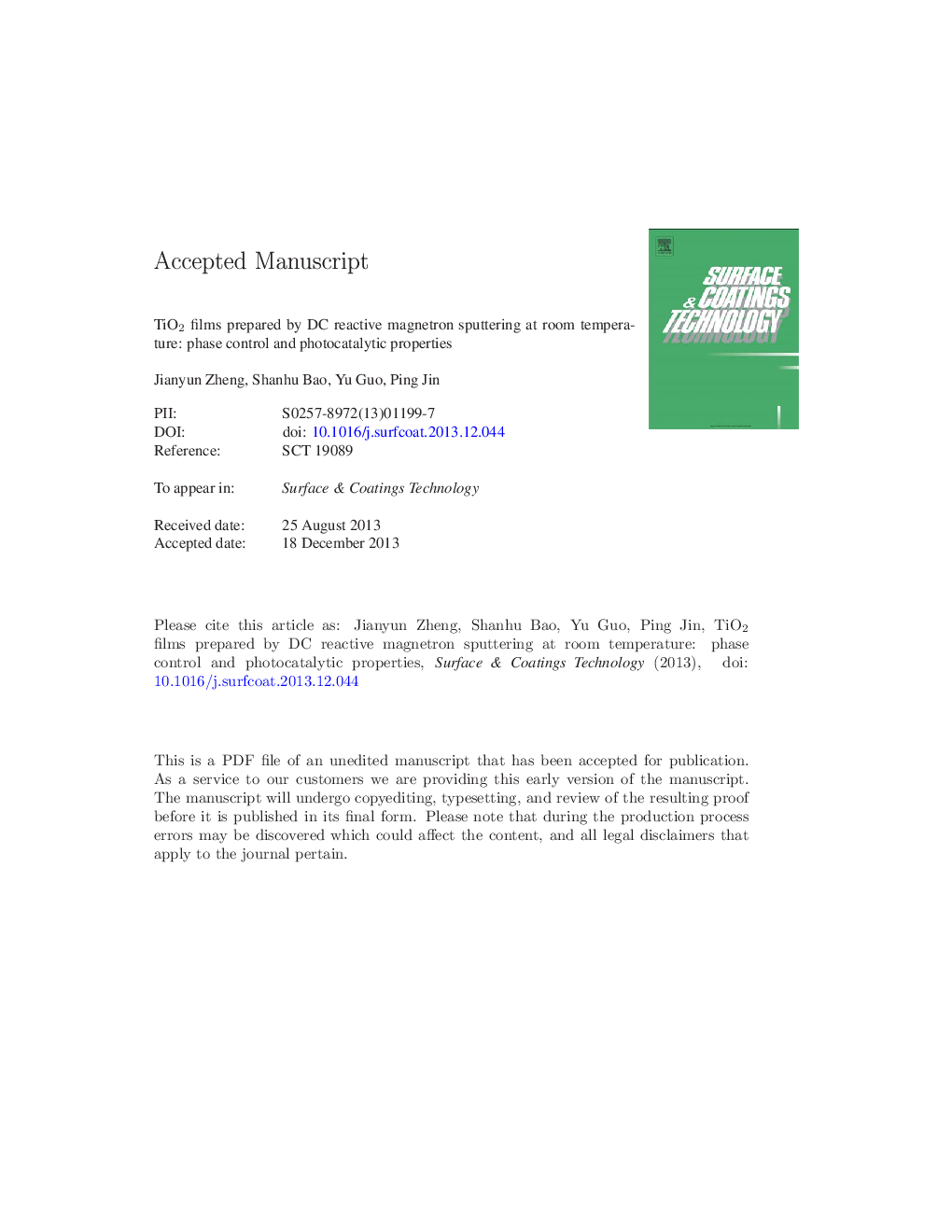| Article ID | Journal | Published Year | Pages | File Type |
|---|---|---|---|---|
| 8028315 | Surface and Coatings Technology | 2014 | 37 Pages |
Abstract
Precise control of the crystal phase of TiO2 by sputtering at room temperature is particularly important for practical applications. In this paper, nanocrystalline TiO2 films were deposited on glass and silicon substrates using DC reactive magnetron sputtering without external heating. The phase composition and preferred orientation of the TiO2 films could be controlled by adjusting the negative bias voltages. It was found that TiO2 films deposited at free negative bias voltage or ground exhibited an anatase single phase with a strong (101) preferred orientation, while the preferred orientation transformed into (211) when the negative bias voltage reached â 50 V. A further increase in the negative bias voltage induced the formation of an additional rutile phase, thus generating a mixed phase of anatase and rutile. A pure rutile phase was obtained at high negative bias voltage (â¥â 100 V). The rutile phase with (101) preferred orientation could also be obtained by increasing the bias voltages above â 125 V. In addition, the TiO2 films of different phases performed different photocatalytic activities. The anatase TiO2 films showed higher photocatalytic activity than rutile phase films. Particularly, anatase TiO2 films with (211) preferred orientation showed a significant photocatalytic degradation of organic dye (Rhodamine B), the degradation of which reached over 90% after an irradiation time of 2 h.
Related Topics
Physical Sciences and Engineering
Materials Science
Nanotechnology
Authors
Jianyun Zheng, Shanhu Bao, Yu Guo, Ping Jin,
